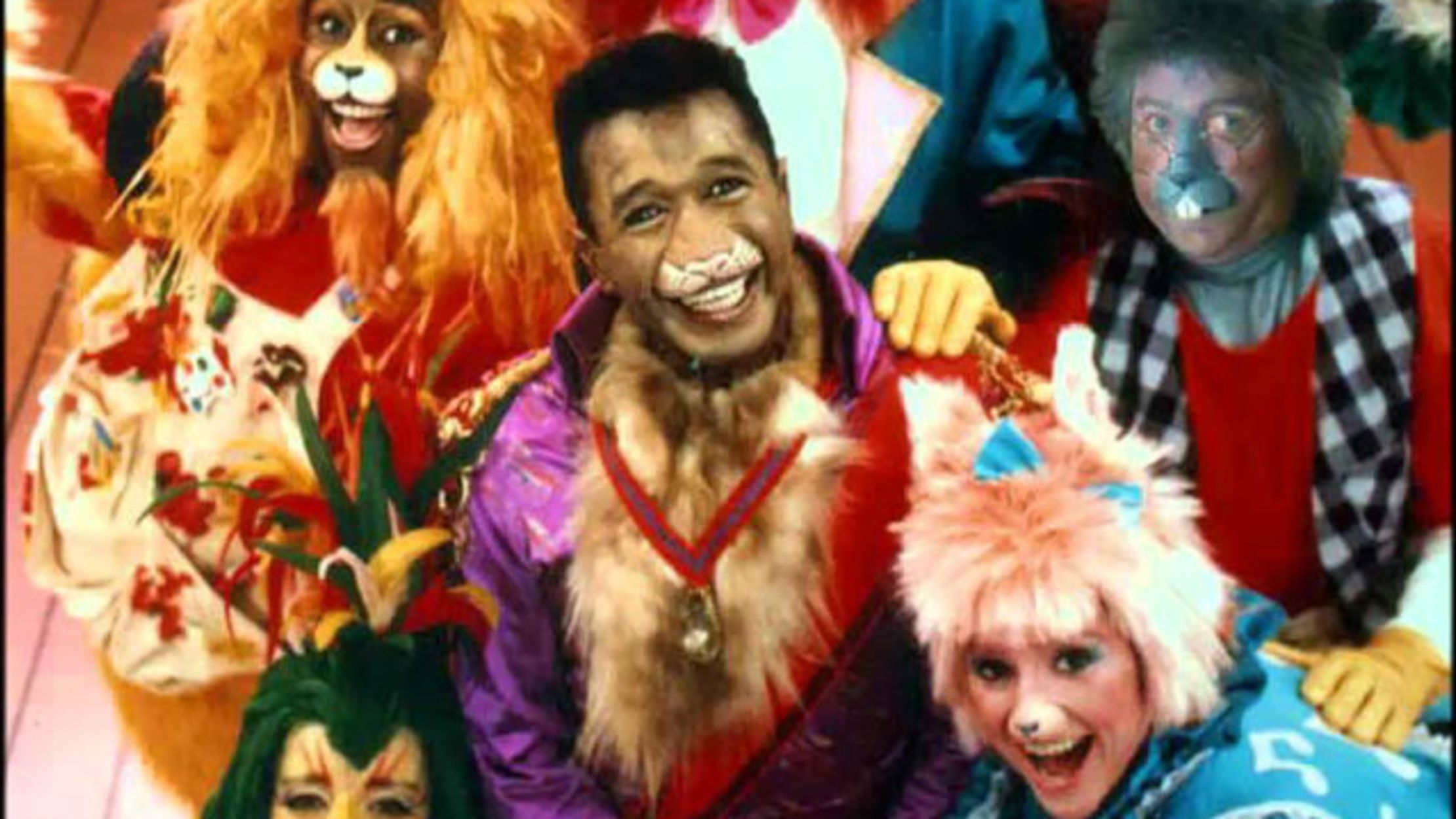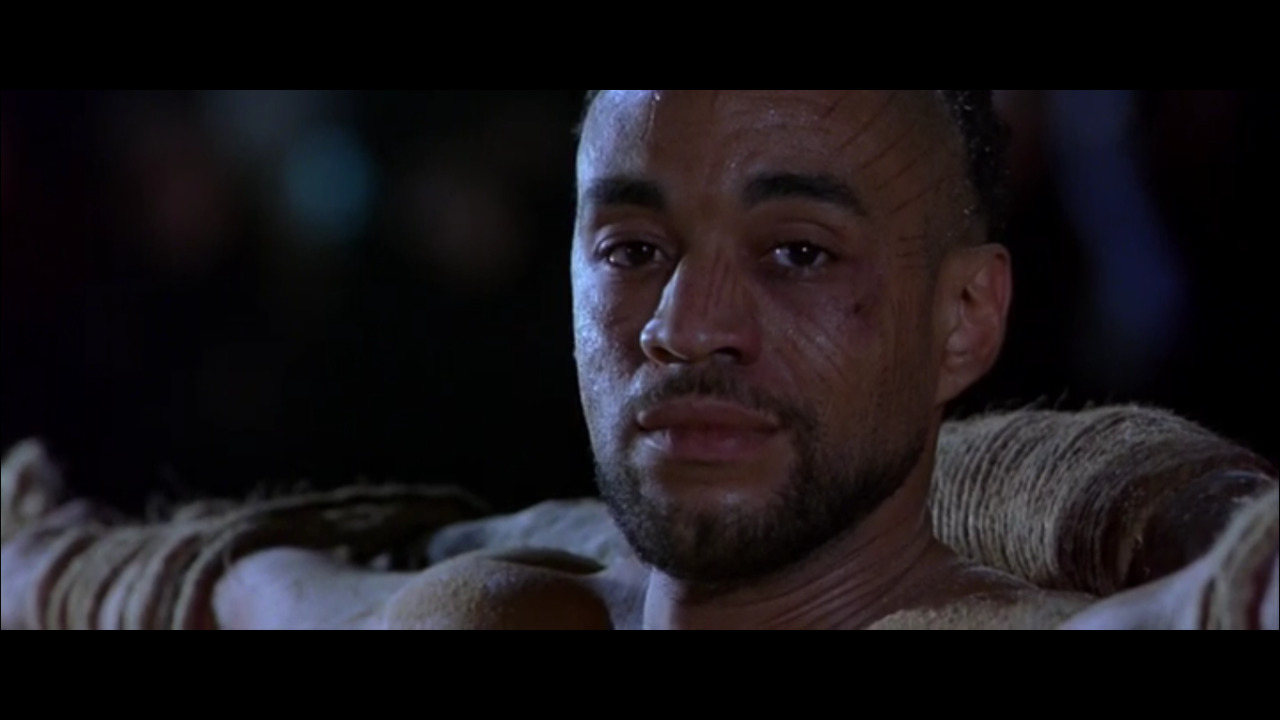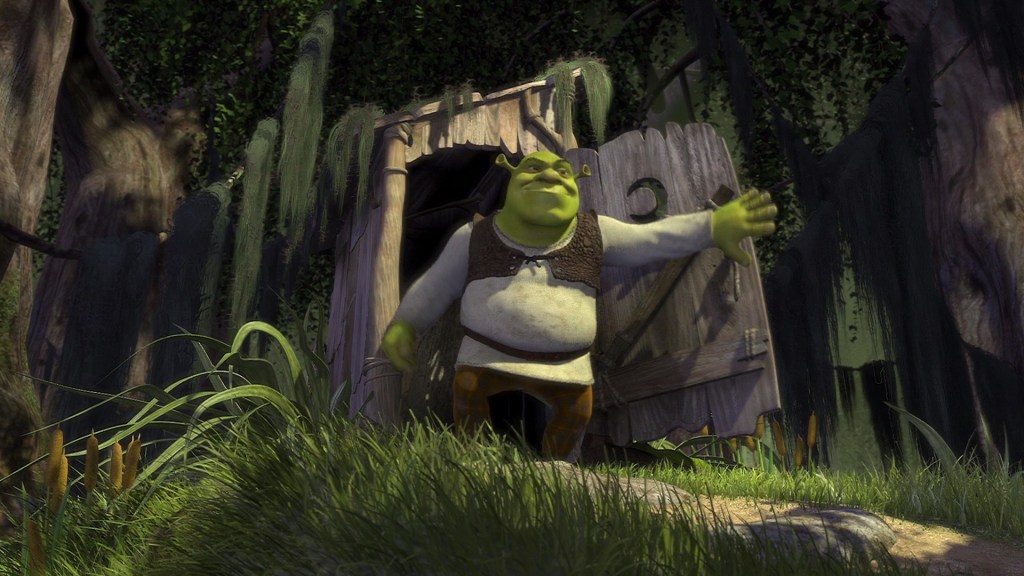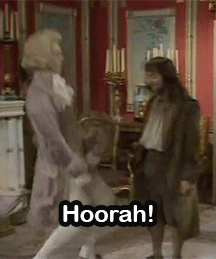Tags
Alfre Woodard, anthropomorphic, anthropomorphic animal, anthropomorphic animals, Ben Vereen, boots, castle, cat, charles perrault, Constantino Fortunato, Daniel Frishman, Faerie Tale Theatre, faerie tale theatre reviews, fairy tale, fairy tale adaptation, fairy tale creatures, fairy tale history, fairy tale origins, fairy tales, fairytale, Fantasy, French, french fairy tale, funny, funny animal, giambattista basile, Giovanni Francesco Straparola, Girolamo Morlini, Gregory Hines, italian fairytale, italy, King, Marquis of Carabas, Mayor Ben, mentor, miller, miller's son, mother goose, ogre, princess, puss in boots, review, shapeshifter, shelley duvall, talking animal, talking cat, television review, three brothers, three sons, toei animation, Tony Cox, trickster, trickster mentor, tv review, Up On The Shelf, Zoobilee Zoo

“Bootmaker, I’m looking for a boot as light as air and fast as the wind. A boot that makes no sound, leaves no tracks.” “You’re in luck, I’ve got one pair left!”
– A feline acquires his defining bit of footwear
Fairytales are full of trickster mentors that aid the hero in their quest. The amount of stories where the mentor takes the form of a wily animal are beyond counting. Cats are a particularly popular choice for the role on account of folklorists making their natural stealthiness and hunting prowess shorthand for cunning and guile. And there’s no fairy tale feline more renowned for their craftiness than Puss in Boots.
Walking into this review I assumed Puss in Boots was going to be a Charles Perrault original, which is how I was introduced to it, but the story actually has Italian roots. The oldest known version is 1550’s Constantino Fortunato, or “Fortunate Constantine” by author and fairytale collector Giovanni Francesco Straparola. One of several tales included in the two-volume collection The Facetious Nights, the story is about a poor boy who marries a princess thanks to a clever cat. It’s interesting to note that this cat isn’t just a magical talking cat but a fairy in disguise; a detail that fell by the wayside in future retellings. Writer Girolamo Morlini wrote his version of Puss in Boots shortly afterwards (fair turnabout since Straparola often borrowed from Morlini), followed by Giambatta Basile in 1634. Then Charles Perrault popularized the tale in France as part of his fairy tale collection (the same that also launched the character of Mother Goose), and the feline’s fame hasn’t dwindled since. He’s even well-known in Japan, where a popular film by Toei Animation has made him the studio’s mascot.
Puss in Boots is one of those fairytales that falls into a gray area where the moral is concerned…in that there isn’t really one at all. If you go by a purely textual reading of the story, the takeaway is that lying, cheating and stealing will get you what you want without any consequences; not much of a lesson (but one that’s far too relevant if you look at the current state of the Republican Party). On the flip side, Puss uses his wits to make the most of his and his master’s lousy circumstances. He’s simply doing what he can with what little he has to improve their situation. The story takes place in a society that favors the first-born son, so it’s easy to root for the youngest son stuck with naught but a wisecracking mouse-catcher while his selfish brothers have the means to support themselves. The men and monsters Puss deceives are largely deserving of his trickery.
Tying into that is the unusual choice of clothing this cat in footwear. It’s not just for aesthetics, I assure you. Shoes were a luxury afforded only to young people of the upper-class in the Middle Ages because they were outgrown or worn through so quickly. As such, boots were a sign of wealth and status. In both the original fairytale and today’s episode, the king refuses to grant Puss an audience until he learns he wears boots. Appearances and presentation played as all-encompassing a role in society then as they do now, but the story of Puss in Boots shows that anyone with brains and the ability to pass off as refined can game the system. Make what you will of that.
So I’ve mentioned in some of these reviews how good HBO’s Happily Ever After: Fairy Tales for Every Child is. It’s got the same conceit as Faerie Tale Theatre, just gather a bunch of celebrities and have them do fairy tales except it’s animated and multicultural. It was universally praised for being the first children’s series to fully cast BIPOC actors in these familiar fables…
But they were all of them deceived, for another was made ten years before Happily Ever After – this very episode, as a matter of fact. I was shocked to find such progressive casting in something from the 80s.
The story starts with a miller dying and bequeathing his worldly possessions to his three sons: the oldest gets the mill, the second gets his trusty donkey, and the youngest son Edgar is left with the cat. Edgar is played by the legendary actor and dancer Gregory Hines. Unfortunately for us, he hardly gets a chance to show off his incredible moves here, not even the Ethiopian Shim-Sham Sand Dance. Plus they stick him in this huge curly wig that does him no favors. His saving grace is the rapport he develops with Puss over the course of the episode. And speaking of…
Go ahead, make all the Cats 2019 jokes you want. I’d say the costume and makeup are closer to the stage version, which by comparison is leagues above that so-called movie.
You might recognize Puss out of costume as Ben Vereen, who’s best remembered as Will Smith’s deadbeat dad in Fresh Prince, Wayne Brady’s not deadbeat dad in How I Met Your Mother, and Judas and the Leading Player in the original casts of Jesus Christ Superstar and Pippin respectively. But to me personally, he’ll always be Mayor Ben from a little show from my childhood called Zoobilee Zoo.

My dad had a tape with some episodes on it in his video store and I watched the hell out of it. I couldn’t tell you a thing I remember from high school math class if you put a gun to my head, but damn if I can’t still belt the theme song with the same enthusiasm and confidence I had as a hyperactive four year-old. Mayor Ben served as the show’s host and was more of an observing narrator than a character, though he was so cool, wise and theatrical that he left an impact on me. It blew my mind when, as I was expanding my tastes in musicals, I learned he was the same actor who performed “Magic to Do”, my favorite opening number in any show. Granted, my respect for Vereen has gone down a bit after discovering he harassed several actresses while directing a production of Hair in 2015. Although it may not absolve him of the hurt he caused, he did apologize for his transgressions, which is more than I can say for other men in his position who’ve been accused of worse.
Anyway, Edgar isn’t happy with his lot and ponders the many ways he can kill the cat. As a way of getting us to like him it’s…a choice. To be fair, this is something the miller’s son considered doing in the original story too, because standards for animal treatment five-hundred years ago were lax to say the very least. Edgar later shares that his father beat him regularly, something he and Puss have in common. So perhaps this episode is really a deep philosophical musing on toxic masculinity, generational abuse and their ramifications on the black community.
It takes a lot of wheedling from Puss to get Edgar to go along with his plan to make them both rich and powerful beyond their wildest dreams. Said plan has several intricate stages:
- Buy Puss a new ensemble including a sweet pair of boots.
- Pay for them with some game caught in the woods.
- Con the local farmers and Edgar’s brothers into giving him their livestock and present them as gifts to the king on behalf of his master.
- Profit!
Edgar is reluctant, but he acquiesces when Puss threatens to take his plan to his well-off brothers. Puss goes wabbit hunting that night and gets up to all sorts of silly shenanigans before he captures one.
So it was at this point that I realized this episode is not going to be for everybody – but it is so very much for me. All the performers devour the scenery like a Thanksgiving dinner, but Ben Vereen? He gorges himself on it, rolling around on the floor yowling like…some kind of animal in heat, it’s on the tip of my tongue. And if an actor I enjoy watching is going full ham in their performance, well, I can’t help but be hooked.
Then Puss visits the castle and introduces himself to the king.
Puss presents his highness with a horse courtesy of his master “The Marquis of Carabas”. How they show the horse – or rather, how they don’t – is pretty hilarious. He just hands the king a rope that pulls him along while someone does some neighing and hoofbeat sounds offscreen and everyone’s all “Wow, it’s a horse! No really, it is!” It’s not like this was a matter of budget restrictions either as later on we see some real horses pulling a carriage. They deliberately went with the most obviously cheap option and it cracks me up. Either way, this gift pleases the king as he’s been in a rut since his kingdom fell victim to a horrible ogre.
The ogre’s pillaging and murdering spree has sunk the land so deep into poverty that the Princess Lovinia is reduced to doing all the cooking and cleaning in the palace herself.
I’d like to single out Lovinia for just a moment. For a character who originally amounted to little more than a prize for Puss and his master, they do a great job fleshing out her personality here. She pays strict adherence to etiquette and “good form” like the queen in The Princess and the Pea, but unlike her she isn’t a total snob (more like 60% a snob). Her dire circumstances bring out her resilience and creativity, as shown when she crafts a whole new dress herself out of scraps of old ones. Lovinia, like her father, tends to speak in flowery metaphors, further tying into the theme of trying to appear sophisticated and rich in order to get by.
Puss continues to bring the royals gifts and further ingratiates himself into their confidence by ridding the kingdom of mice. When Lovinia asks Puss about what the Marquis of Carabas is like, he plays up how how tall, strong, serious, mirthful, and charming his master is in quick succession. The hamminess in this one scene alone is a lot to take in, maybe almost too much, but I’ve developed a high tolerance for overacting in this series by now. Puss uses what he knows from Lovinia’s tastes in men to teach Edgar how to act like a gentleman. It serves as a way to boost Edgar’s confidence and is a rather nice moment between the two.
The next day Puss moves forward with the next part of Operation Poseur (I swear this cat’s got more steps for his plan than Ilya Muromets). He invites the king and Lovinia to meet the Marquis at his estate for the weekend. Then he has Edgar strip off all his clothes –
– and bury himself in a hole.

Rather than let Edgar in on the scheme so he can act accordingly, Puss just keeps assuring him it’s all part of the plan, to the point where Edgar can only repeat “It’s all part of the plan” even when it makes no sense to say that. Puss runs up to the royals’ carriage and tells them the Marquis was attacked by robbers who stole his clothes and buried him in the ground. The king kindly lends Edgar some of his finery and lets him join them in the carriage. Edgar and Lovinia start bonding over things they enjoy like two kids with a crush on each other, it’s adorable.
As for Puss, he hurries on ahead to prepare “the Marquis'” castle. He comes across some of the ogre’s slave laborers tending to a field. Puss says their master wants them to tell the king that this land belongs to the Marquis of Carabas, or face being chopped into mincemeat. It takes several tries for them to get it right, but they do eventually and the king is impressed. Next Puss rolls up to the ogre’s castle and meets the monster himself.

The ogre puts me in mind of the classic Disney villains who relish in their tyranny while still acting very cultured and polite to their victims. He savors the opportunity to intimidate his guest, but to say he has a hair-trigger temper would be an understatement. So much of the tension comes from whether or not he’ll snap and attack Puss but when. It’s like being trapped in a room with Hannibal Lecter. The ogre can also turn into different animals at will, which I guess explains the genie look.
Something that also fascinates me about this ogre is he isn’t fee-fi-fo-fumming around stealing and devouring out of greed, but out of deep self-loathing and unresolved anger issues which he takes out on the world. “Everything angers me. It’s a hard life, hating”, he laments before recounting how he almost ate himself alive after catching his own terrifying reflection in the mirror. Maybe in this version he isn’t evil so much as he just needs therapy.
Puss goads the ogre into changing into a lion then an elephant to show off his powers. Despite being scared out of his boots, Puss pretends to be unimpressed. Then he tricks the ogre into becoming a mouse and makes short work of him (that’s how you do it, Mickey). The royals arrive to find Puss cleaned up the entire castle in record time and even set up an elaborate wedding ceremony so he can marry Lovinia to Edgar.
Okay, one, Puss may be a lot of things but an ordained minister isn’t one of them. And two, surprise proposals are romantic. Surprise weddings, not so much.
So Edgar and Lovinia tie the knot, the king regains his wealth thanks to his son-in-law, Puss is free to lounge around and chase mice as he pleases, and they all live happily ever after.
Puss in Boots is an over-the-top outing that leans so hard on the children’s theater side of entertainment that I had a lot of fun revisiting it. I appreciate that the extreme acting doesn’t distract from the witty writing; if anything, it emphasizes it. The dialogue walks that delicate line between simple and sharp without sacrificing its humorous edge. When I learned that the person who wrote the script also wrote one of my favorite children’s books, everything clicked together (but more on that when I list the notable credits). There’s enough ham here to give an unprepared viewer trichinosis, but go in expecting light silly fun and you might come out pleasantly surprised.
Notes:
- The music for this one is a pretty jazzy tune reminiscent of The Pink Panther theme, appropriate since they’re both feline-related. The periodical addition of synthesized meows throughout the episode makes it feel like something out of the original Animal Crossing soundtrack.
- When Puss is initially introduced to the king as a cat in a hat, his highness chuckles and says “I remember that!” This is clearly a nod to the Dr. Seuss book Green Eggs and Ham and no other possible children’s story where a clothed cat is front and center.
- The king seems incapable of going anywhere without at least two of his dwarf heralds there to announce everything that happens. One even appears in Lavinia’s closet to proclaim that she’s tearing it apart trying to find a new dress.
- Did anyone else notice the VHS cover artwork doesn’t feature Puss wearing his boots?
- One of my favorite little acting details is that after the ogre crushes a diamond to dust with his bare fist, Puss attempts the same but with less desired results.
- I was taken aback by a loud animalistic noise from something offscreen during the scene when Puss returns to Edgar with the game he caught. It was only when I revisited the part where he lists what they owe the bookmaker, milliner, etc. that I noticed one of the offerings was a deer. This means that Puss also caught a live deer during his hunt and we weren’t privy to its capture. Also, they could afford to show a real lion and elephant for the ogre scene but not a deer or a single horse. The budget department for this episode must have torn their hair out over this.
- According to IMDB, this is the lowest-rated episode of Faerie Tale Theatre, which…really? Lower than Rapunzel? Lower than Hansel and Gretel? Even lower than Goldilocks? I’m aware this isn’t exactly a top-tier episode, but it is far from the worst in my humble opinion.
- In case anyone‘s interested in learning what book introduced me to Puss in Boots, that would be the 1990 print with Caldecott-Honored illustrations by Fred Marcellino.
- One of the farmers tries to warn Puss about the ogre, but when Puss pretends he’s the ogre’s servant, the farmer backtracks and says he was talking about about a nearby tree called “bogre”. Out of curiosity, I looked up if a bogre is real. It turns out it’s a French word meaning “heretic”.

Hey, Was That…: Shelley Duvall takes up narrating duties once again. Alfre Woodard, theater star and African-American actress with the most Emmy wins, is Princess Lovinia. King Fortuitous is writer and character actor George Kirby. Character and voice actor Brock Peters, who’s probably best known as Tom Robinson in To Kill A Mockingbird, lends his intimidating baritone and figure to play the Ogre. Tony Cox, Peter Risch and Daniel Frishman, who previously appeared as dwarfs Bubba, Bruno and Boniface in Snow White, return here as the king’s heralds. Faerie Tale Theatre regular David McCharen is one of the ogre’s perturbed peasants. The teleplay was penned by none other than Jules Fieffer, author of children’s literary classic The Phantom Tollbooth. Director Robert Iscove has even more experience directing multiracial casts in fairytales: he also did the 1997 TV version of Cinderella with Brandy –
– and 2003’s From Justin to Kelly.
Who’s The Artist?: Unfortunately finding what specific artist influenced each episode is becoming the exception rather than the rule these days. If this keeps up, I’m afraid I’ll have to retire this category.
Better Or Worse Than…?: Going back to HBO’s Happily Ever After, that version sets the tale in Hawaii with Puss (voiced by a whimsically wily David Hyde Pierce) helping an honest banana farmer’s son while learning an important lesson about telling the truth; it’s one of the few versions where his scheming is revealed by the story’s end, though it’s done well. I’m not sure if I can count Dreamwork’s Puss in Boots movies (though The Last Wish is excellent) but the fearless feline’s premiere in Shrek 2 comes the closest to his literary counterpart since he attempts to kill an ogre. Regardless, all of these are infinitely better than William Shatner’s CGI travesty The True Story of Puss in Boots and Phil Nibbelink’s Puss in Boots. I will say the latter is something of a novelty since Nibbelink animated it entirely by himself in an early version of Flash, and it’s one of the very first films made wholly with that program. That doesn’t mean it’s good, but it is an interesting animation tidbit. Finally, there’s Christopher Fucking Walken as Puss in the Cannon Movie Tales version which is so…he sings and dances…I…my mind can’t handle it. Just watch.
As for this episode, it lies comfortably in the middle of the aforementioned retellings. It’s better than I think some give it credit for but a lot of my personal enjoyment comes from the abundance of purple prose and the actors’ lack of restraint.
I also may or may not have been working on my own treatment of a Puss in Boots animated film since college. Maybe someday something will come of it…
Ranking: Puss in Boots gets by on the sheer amount of ham and cheese it delivers. It earns the new Number 9 spot between Snow White and Pinocchio.
And in case you still don’t believe Ben Vereen can play a convincing smooth talker in his usual theatrical manner, enjoy this bit of his entertaining and sinister turn from Pippin:
Next time on Faerie Tale Theatre Reviews, cats aren’t the only fashion-obsessed fairy tale characters as we’ll see in The Emperor’s New Clothes.
Thank you for reading! Faerie Tale Theatre reviews are posted on the 6th of each month. Special thanks to my generous patrons Amelia Jones, Sam Flemming, Robert Barnette, and please welcome the newest member of the Patreon party, longtime friend of the blog Matthew Bond 007! Anyone who joins the Patreon party can get such fun perks as sneak peeks of reviews, extra votes, movie requests and more!









I was watching this episode with my roommate once, and we both thought it looked like the carriage used in this one was later used for the 1997 “Cinderella,” except without the pumpkin additions. I could be wrong, but they look eerily similar to each other.
LikeLiked by 1 person
Interesting. I should compare them both to see.
LikeLike
The guy who directed this later directed the version of Cinderella with Brandy? That is very cool! Something I wanted to add about Brock Peters as the Ogre after Puss keeps talking about the Marquis of Carabas, he says “The Marquis of Carrrrrabas!” in a high pitched mocking tone I always thought was really funny. Again, it just fits in with that old school villain ham.
LikeLiked by 1 person
Pingback: Faerie Tale Theatre Reviews: The Emperor’s New Clothes | Up On The Shelf
Pingback: Faerie Tale Theatre Reviews: The Little Mermaid | Up On The Shelf
Pingback: Faerie Tale Theatre Reviews: Grimm Party (Faerie Tale Theatre’s Greatest Moments) | Up On The Shelf
For some reason, I never saw this 1 when it debuted on tv. There are several FTT episodes that I missed initially. A friend of ours had taped some off the tv, so we caught up on those as kids. But I didn’t see this 1 til college when I discovered the local library had all the FTT episodes on VHS. And then I rewatched this 1 again when my then boyfriend bought me the dvd set in 2018. I too was disappointed that Greg didn’t get to dance. I tried to watch a VHS version of Pippin years ago & couldn’t get through it. But I remember thinking to myself where have I seen that guy b4? I think I saw some episodes of Zooblie Zoo. I was most familiar w/ Brock Peters from Polly, the musical tv adaptation of Pollyanna. I didn’t see To Kill a Mockingbird until I was much older. I loved Antonio Banderas’ Puss. And I remember being confused as to why the ogre was depicted as green. I didn’t remember ogres being described that way or drawn that way in fairy tales. I loved the romance bet Greg & the princess. And I love the music. This 1 is pretty low on my list but not as low as Goldilocks, Red Riding Hood, & Rip.
LikeLiked by 1 person
Pingback: Faerie Tale Theatre: The Ultimate Episode Ranking | Up On The Shelf